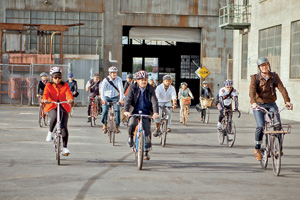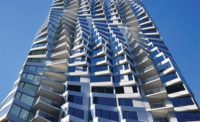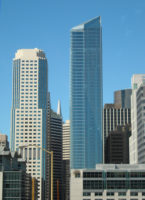Nerd Alert: A new wave of developments in San Francisco show the danger of betting the urban future on high-tech.
Every decade or so, an economic boom roils San Francisco. Self-appointed arbiters of cultural taste in this progressive and parochial city declare that gentrification is the most insidious urban danger of all. News flash! Our City will be trampled by newcomers who don't share Our Values.

This time the villains are such locally grown technology icons as Twitter and Facebook, Google and Yelp. Hot-wired job producers that other metropolitan regions dream of; here, in 2013, they're likened to a nightmarish threat.
Consider the alarm sounded by acclaimed author Rebecca Solnit in an essay this year for the London Review of Books: “All this is changing the character of what was once a great city of refuge for dissidents, queers, pacifists and experimentalists.”
Now consider the alarm sounded by the very same Solnit during the dot-com boom in 2000's Hollow City: The Siege of San Francisco and the Crisis of American Urbanism, a requiem for “the great anomaly . . . We were a sanctuary for the queer, the eccentric, the creative, the radical . . .”
So when I once again hear apocalyptic warnings about the threat to San Francisco's soul, they suggest instead that the bubble soon may burst. What's worrisome this time is how developers and government are betting the future on an urban uniculture, a city planned for exactly one segment of the population: lean, lithe Millennials with a taste for food trucks and cash to burn.
You can see this in the packaging of Pier 70, a 28-acre mixed-use project proposed for San Francisco's waterfront.
The developer is Forest City Enterprises, an old hand at urban renewal in all its public-private forms; its largest San Francisco project to date is a 1 million-square-foot shopping mall anchored by Bloomingdale's. The development in the works would include 1,000 residential units and 2.5 million square feet of commercial space on former industrial land, with an estimated infrastructure cost of $152 million.
These most definitely are not small numbers. Yet the public presentations about the master plan—which is still in the early stages—portray Pier 70 as a case study in tactical urbanism with DIY flair, right down to the flow charts with funky lettering showing the “urban ecosystem” where “innovation-focused firms” would subsidize local food markets and artisans. Yes, there'd be tall buildings, the concept maps reveal, but with a “human-scaled creative core at the center.”
The renderings are populated by people of all races and an average age of 30, tops. Dogs and bikes are plentiful, as are sunglasses and untucked shirts. One plaza is shown with a farmers' market on the left, food trucks on the right, and a communal table in between. The sidewalk caf' in another rendering is next to a bicycle path with people doing tai chi among native flowers; the adjacent residential tower is barely sketched in.
The same vibe permeates the city's effort to redo its defining downtown thoroughfare, the broad diagonal of Market Street. In this case, the challenge is to juggle cars and buses, historic streetcars, pedestrians and bicyclists, and the crowds emerging from five subway stations. After several rounds of neighborhood meetings and now-obligatory webinars, the burning question is whether bicyclists—the most tenacious constituency by far—will have dedicated separated lanes on every block.
The design firms working as consultants to the city's Department of Public Works on the Better Market Street plan envision “streetlife zones” with spaces “for the virtual, digital and physical worlds to interact.” On the rendering of the block that Twitter now calls home, the street furniture includes swinging benches. We see guitarists, bicyclists, two guys in cargo shorts. Nobody wears a tie. Nobody is down-and-out.
There are other projects like these in San Francisco and, from what I've seen, every other ambitious American city today. The visual fluff can be ignored, but it is troubling all the same.
Cities are messy, unpredictable entities. When decision-makers try to force changing districts into a mold—in the case of San Francisco, something akin to Brooklyn-by-the-Bay—the rest of the population could be left outside looking in.
John King is the urban design critic of the San Francisco Chronicle and author of Cityscapes: San Francisco and Its Buildings (Heyday, 2011).



Post a comment to this article
Report Abusive Comment